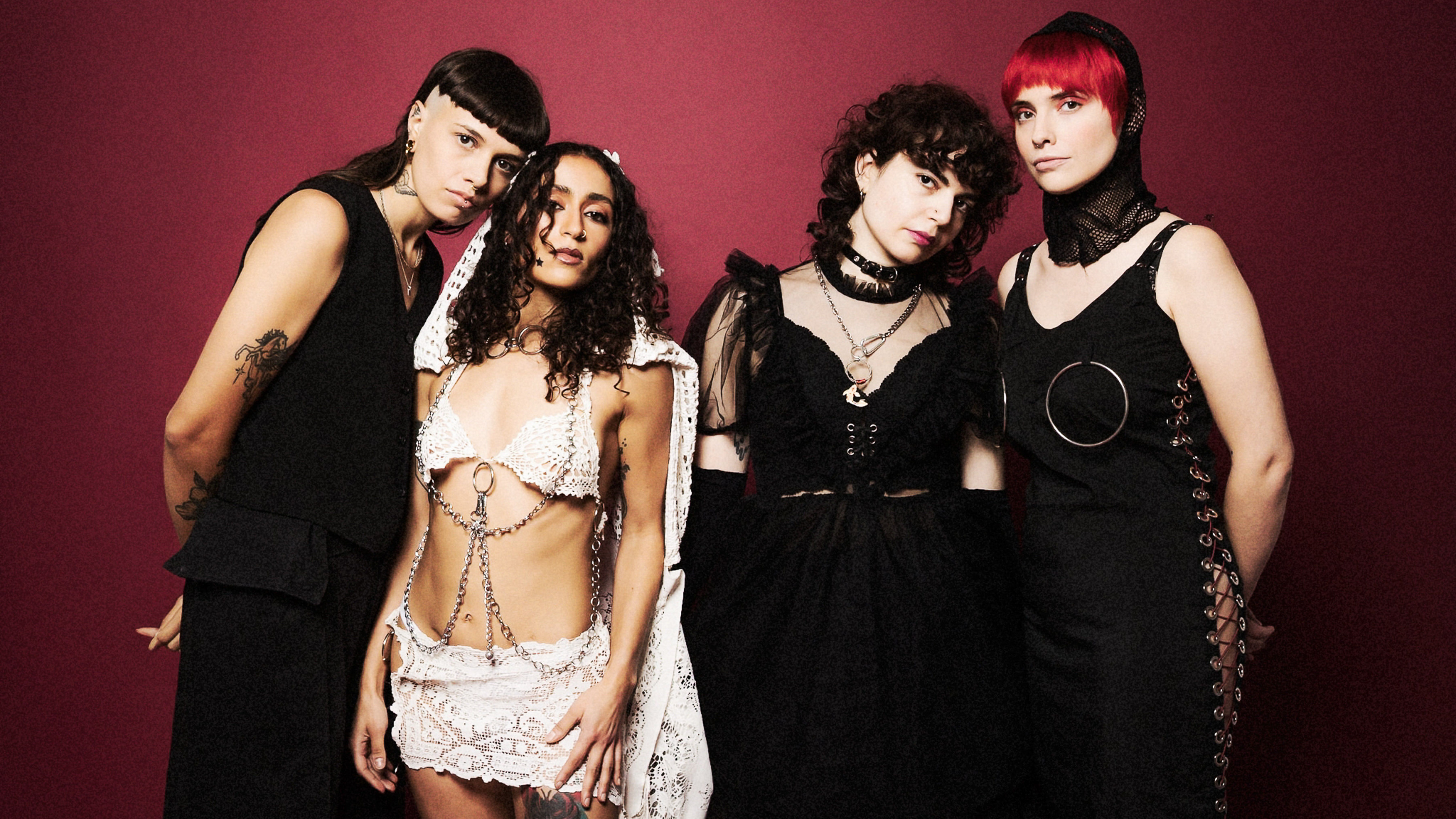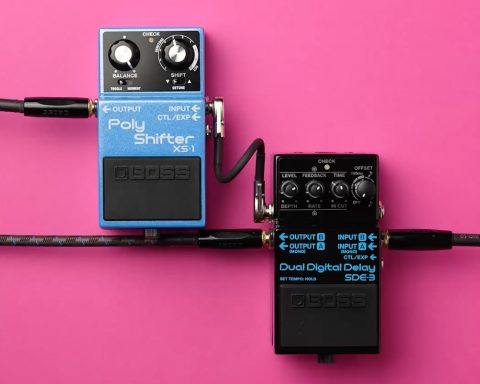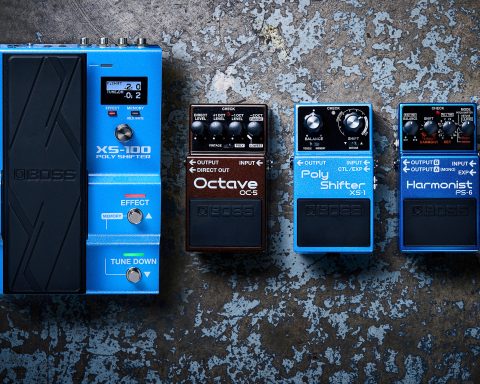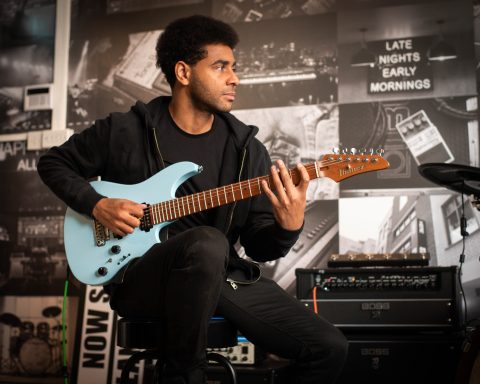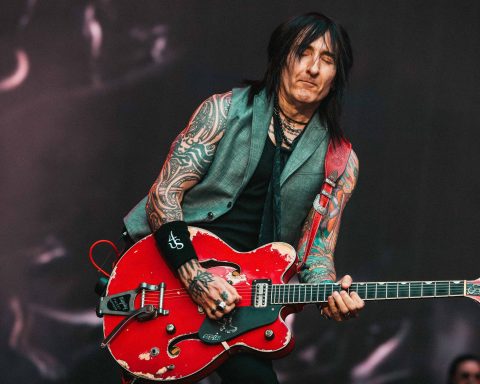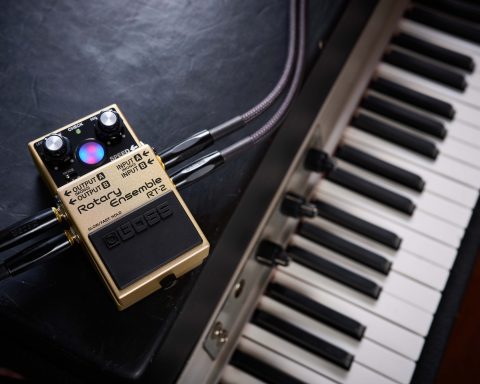The Anglo-Maltese outfit ĠENN are back, and they’re sounding formidable. Following their 2023 charting debut unum—an album that CLASH praised for creating “its own world” and Loud & Quiet called “electric”—the Brighton-based quartet have dropped their latest single, “Reverberations.” It’s a track that shifts between art-rock, shoegaze, and psychedelia, its cinematic texture amplified by the mix from Johnny Hostile (Savages, Jehnny Beth). Hostile himself praised the song for its “chaotic, beautiful, and impossible to resist” rush of pure energy. That rush is something ĠENN are equally dedicated to replicating live, leaning heavily on the reliability and tone of their BOSS effects.
Sonic Sisters
Guitarist Janelle Borg crafts her intricate layers and “wall of sound” using a streamlined board dominated by BOSS pedals, including the TU-3 Chromatic Tuner, DD-7 Digital Delay, BD-2 Blues Driver, OD-1X Overdrive, and GE-7 Equalizer.
Meanwhile, Leona Farrugia handles the track’s ghostly, almost operatic vocal live performance with the VE-22 Vocal Performer. Farrugia relies on the unit to eliminate the risk and hassle of a laptop, while giving precise control over effects like delay, reverb, and harmonization.
As Pitchfork noted, their work is “complex, ambitious post-punk,” and with the VE-22, Farrugia can truly use vocals as an instrument to reflect that complexity.
With ĠENN recently named Artist Patrons for the Music Venue Trust and a UK headline tour set for February 2026, we sat down with Borg and Farrugia to discuss their creative process using BOSS effects, the band’s approach to performing live, and life as modern musicians.
Throughout this insightful interview, we explore how ĠENN’s studio sound translates to the stage, the resilience that fuels their sisterhood, and why BOSS gear remains a key ingredient of the group’s unmistakable live sound.
"The VE-22 has been a life-changer, honestly... I wanted to be free. When I got the VE-22, I felt a weight off my chest."
Leona Farrugia
Vocal Vision
Leona, how has the BOSS VE-22 Vocal Performer enhanced your performances?
Leona Farrugia: The VE-22 has been a life-changer, honestly. It means I’m not bound to a laptop. Traveling with a laptop to perform was a bit challenging. I always worried that it would freeze in the middle of a show. I just didn’t want that concern on stage. I wanted to be free. When I got the VE-22, I felt a weight off my chest.
The VE-22 feeds my vision, and the effects help me visualize a story. For example, there are bits of a specific song we’ve been working on that use a robotic effect. It helps set the tone of the song and distinguish between the chorus and verse parts.
I’m really big on texture, and the VE-22 gives me that. The interaction is different when it comes to vocal effects. It makes you feel something. It elevates the thing that you’re trying to convey.
I like to use it as a color palette, like when you’re painting and you have all your colors in front of you. I like to pick and choose the effects to suit, and it all adds up to help create a bigger picture.
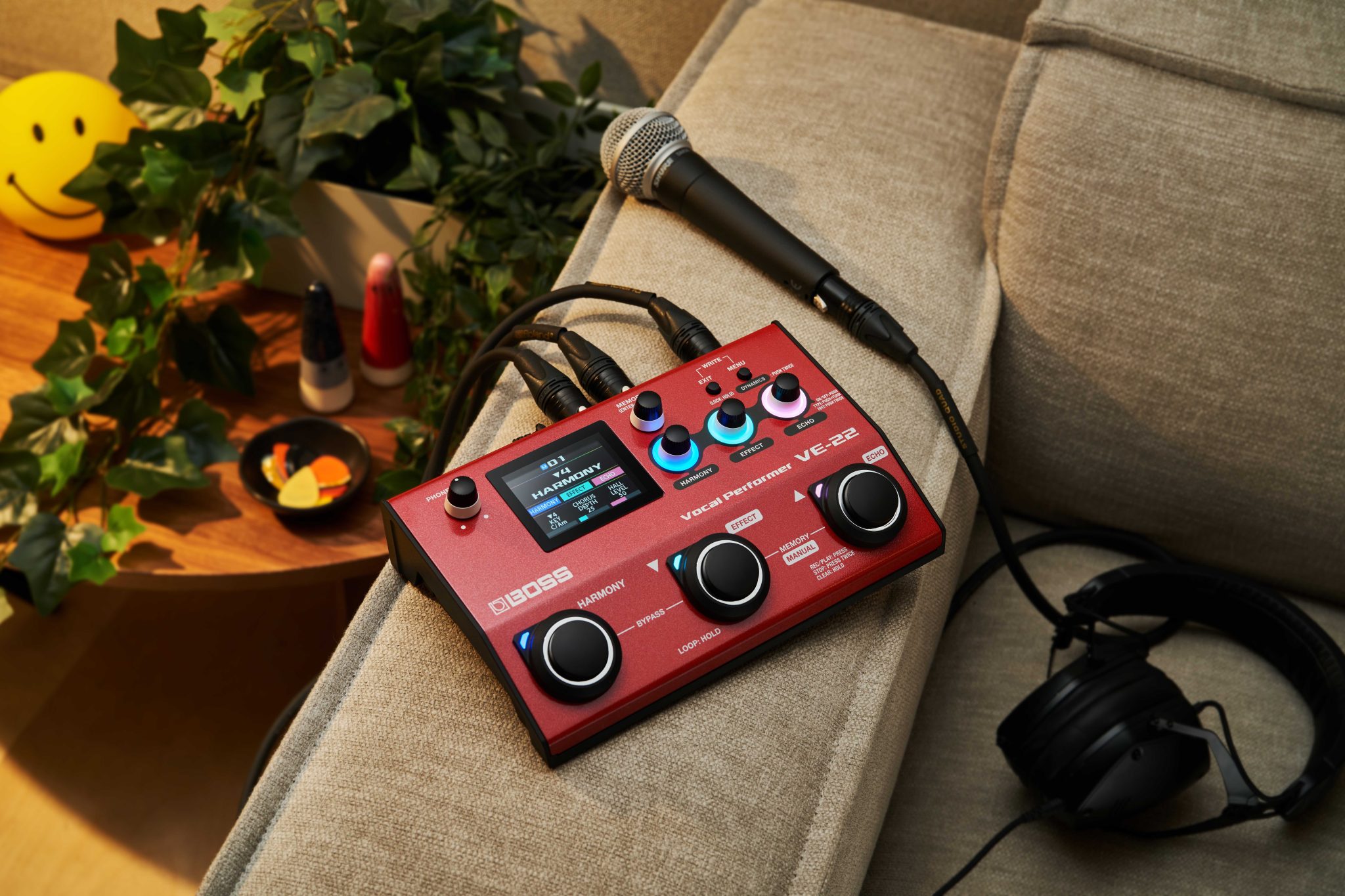
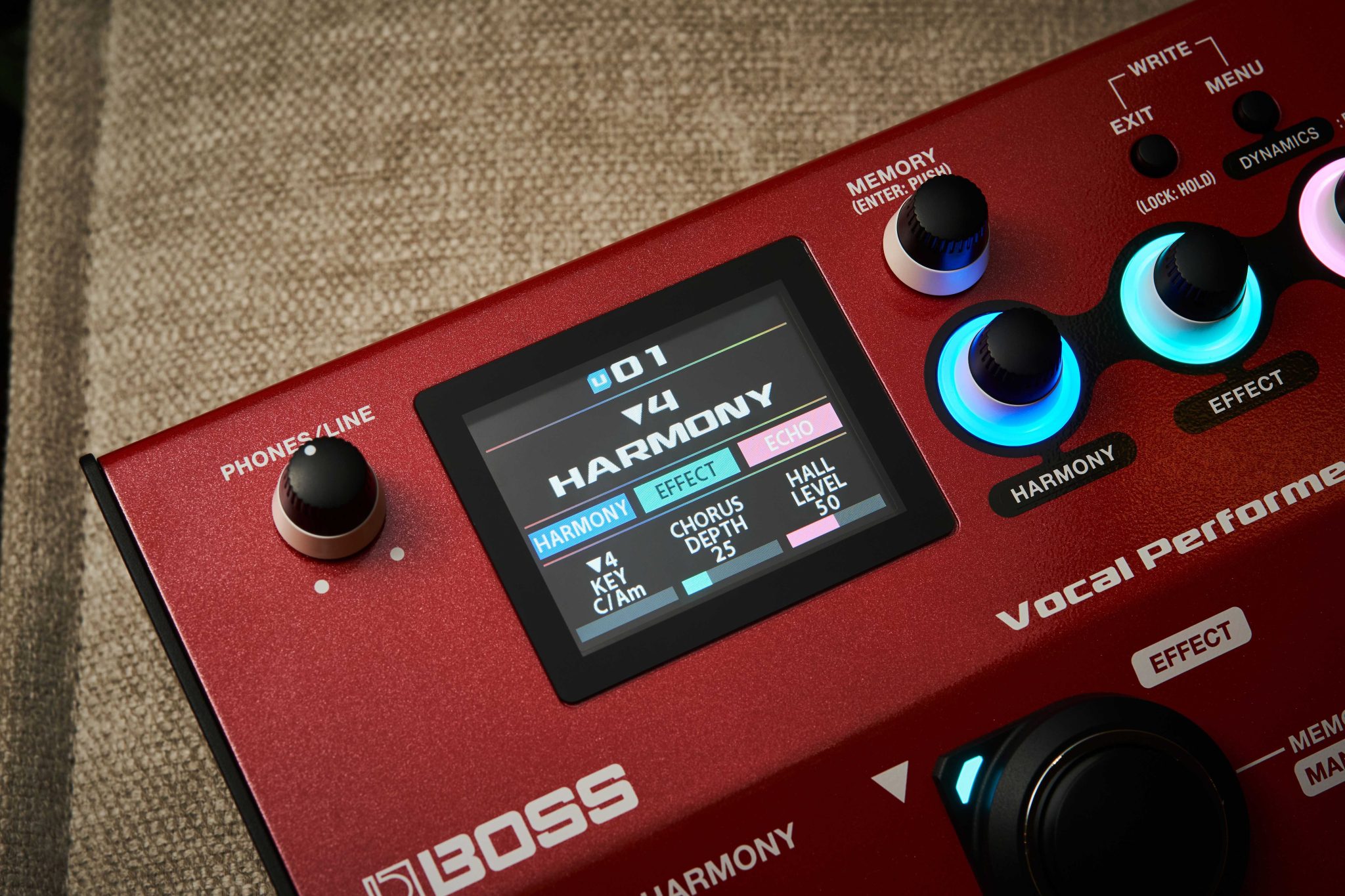
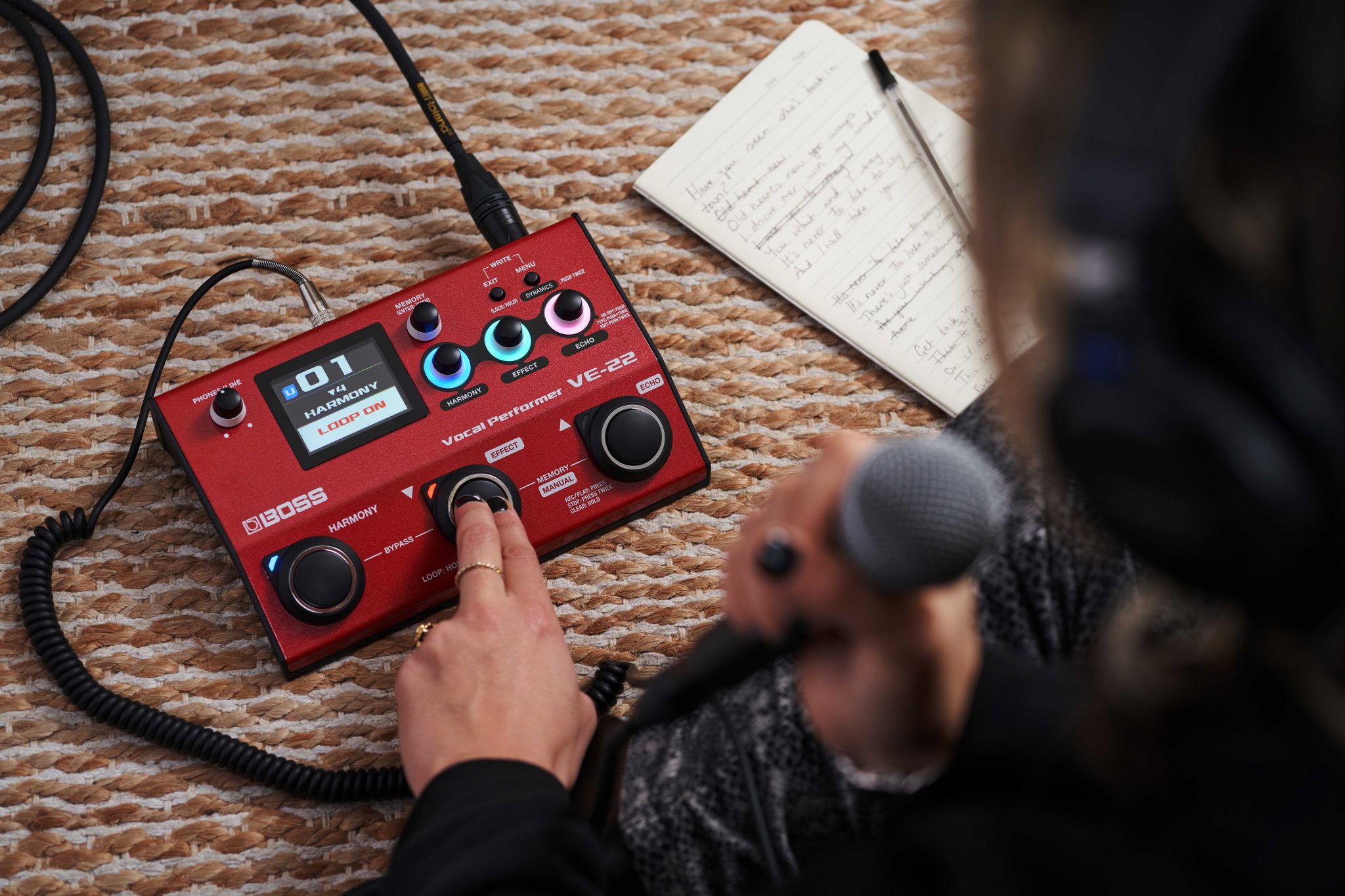
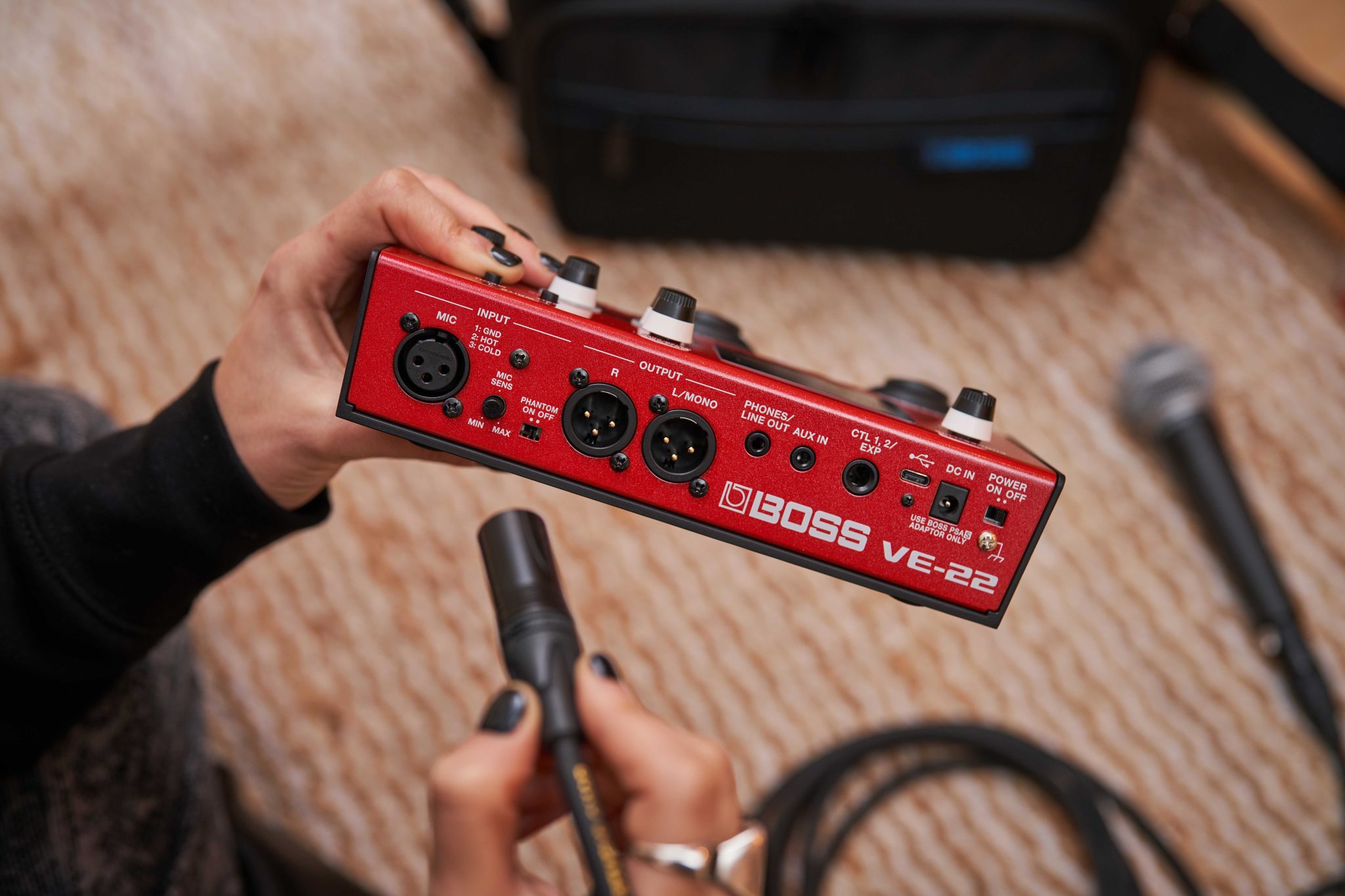
"The VE-22 feeds my vision, and the effects help me visualize a story."
Leona Farrugia
Perfect Harmony
Do you make use of the looper function?
I like to use the looper function because I’m a big fan of ad-libs and layers. You can do that live with the VE-22. It really helps to feed the imagination. It’s also useful for songwriting. We were working on an idea which was based on the looper: a melody upon a melody upon a melody. It’s amazing.
As a vocalist, what’s your approach to using the VE-22?
I use my voice as an instrument. I’m big on delays and reverb. There’s an echo preset called Hazy Wrapped, and it’s one of my favorite ever effects. It makes my voice sound like a reverb-y guitar, especially when I’m singing big, airy vocals. It makes it gel with the instruments and creates a shoegaze vibe.
You can also get a nice double-track effect. For example, I like to use the Harmony Double effect if I’m in a chorus part. It’s chef’s kiss. The VE-22 Harmony effects are great, especially as we don’t have backing vocals. It gives you so much control.
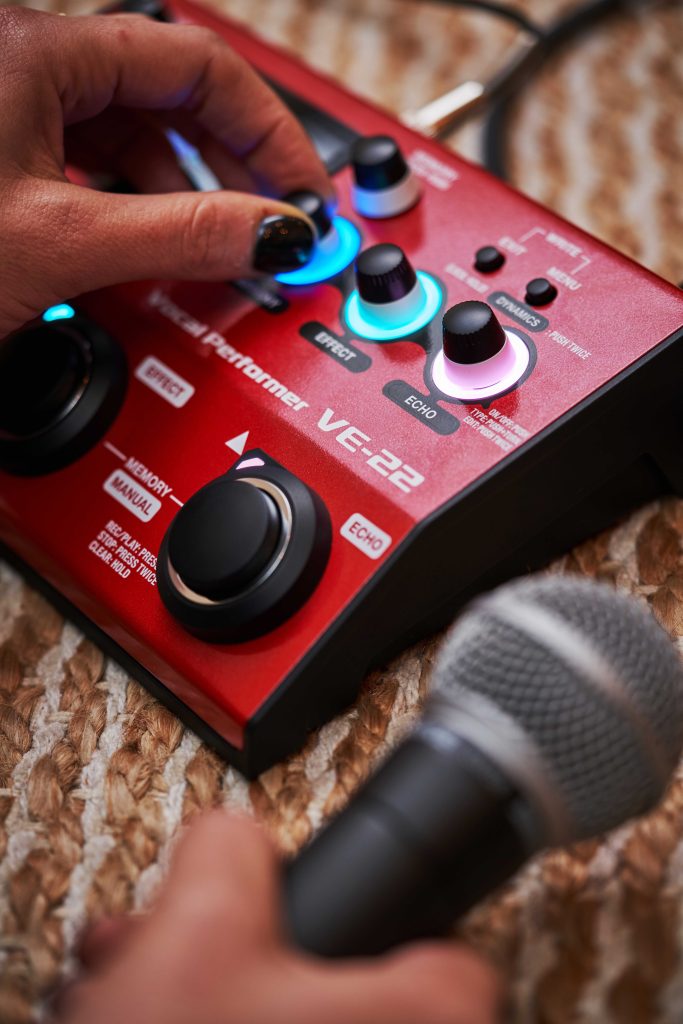
Do you have any other favorite presets?
Another one of my favorite VE-22 echo presets is Cathedral. My vocal vibe is like a big, reverb-y church. The VE-22 gives you that balance of not being too upfront, like in mainstream pop, but still sounding very sophisticated. It still sounds smooth and not too grungy. It’s a little bit compressed, but not too much.
I’m a big fan of Sega Bodega, who are big on vocal effects. I also like some elements of K-pop. I look at vocals as storytelling. And the effects are an extension of that. I like the electronic-sounding effects of the VE-22, like Pitch Correct. You can do so much with it.
"The VE-22 helps make the band's overall sound unique."
Janelle Borg
Leveling Up
How does the VE-22 impact the overall sound of ĠENN live?
Janelle Borg: The VE-22 helps make the band’s overall sound unique. Leona has been talking about using vocal effects for years. This year, we wanted to level up our equipment. We started to use some backing tracks, and at that point, I thought, “We’re going to get the VE-22.”
LF: Since Janelle and I are in the same register, it sometimes feels like there is another guitar. But obviously, it’s vocals. Using the VE-22, the vocals make the overall sound bigger, rather than having a second guitar.
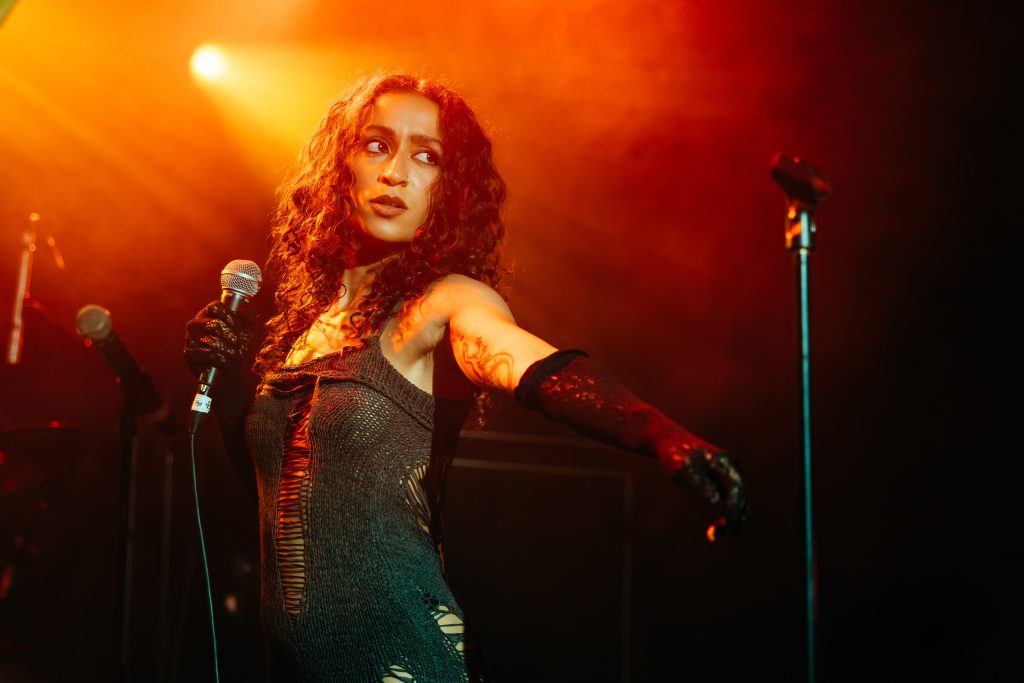
"The VE-22 is very user-friendly."
Leona Farrugia
Leona, do you find the VE-22 easy to use?
LF: I find the VE-22 pretty easy to use, but there’s still a lot to explore. I’m excited to experiment more with it. Like changing effects when I’m using the looper. I’m not a very technical person, so I’m still learning how to use it fully. It’s very user-friendly.
Have you used any other effects units for vocals?
LF: I used to use BOSS guitar pedals as vocal pedals, along with a preamp. I used distortion, delay, chorus, reverb, and the Harmonizer. The sound guys used to hate it so much. They were like, “Guitar pedals for vocals?!” But I had complete control over effects like delay on specific words or lines. I like control.
JB: It helped with having a consistent sound in every venue in every city. BOSS pedals are tour-friendly; they handle the wear and tear. My pedalboard is mostly BOSS. They’re standard for many things, and they never break. I find them simple to use. I like to see what’s happening. Old-school knobs work for me.
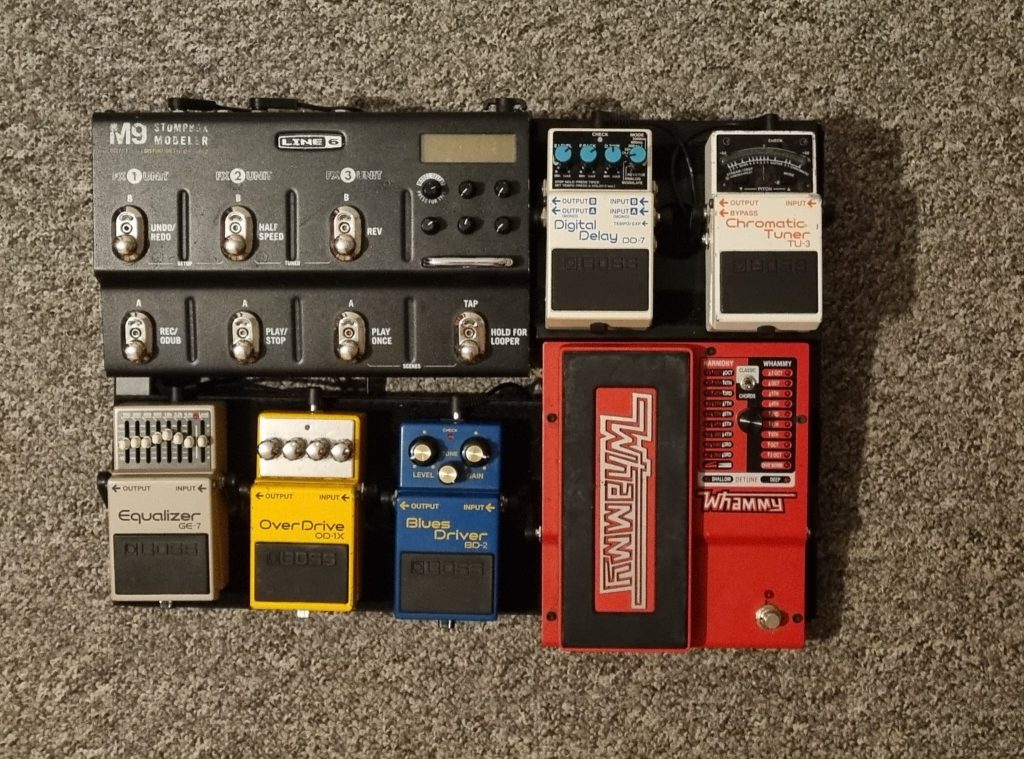
"I have the TU-3 Chromatic Tuner, DD-7 Digital Delay, BD-2 Blues Driver, OD-1X Overdrive, and GE-7 Equalizer on my pedalboard."
Janelle Borg
BOSS Essentials
Tell us about your pedalboard, Janelle.
JB: I have the TU-3 Chromatic Tuner, DD-7 Digital Delay, BD-2 Blues Driver, OD-1X Overdrive, and GE-7 Equalizer on my pedalboard. Some people in the guitar scene see simplicity as a bad thing, but the simpler the better, as far as I’m concerned.
For overdrive, I use the BD-2 and OD-1X. I think I picked the OD-1X up in Malta, but it’s been around for many years. I got the Blues Driver last year from my friend Dom. The DD-7 is a relatively recent addition (late last year), and Dom gave it to me because he thought I would use it more than he does.
Most of my BOSS pedals are secondhand. They seem to hold their value wherever you go, in every country. The secondhand market is booming. I regularly visit a guitar store in Brighton called Badlands to see what they have. Obviously, there was GAK, too (RIP).
"I like the DD-7. It really elevated our sound a lot."
Janelle Borg
I like trying stuff and seeing what works within limitations. Ideally, I don’t want to have a huge pedalboard because even travelling with the one I’ve got is a pain. I’ve never seen anything like it when we played with God Is an Astronaut. They have a fantastic sound, but pedalboards of that size are just too much for me.
Delay is a key feature of your guitar sound, Janelle. What’s your approach?
JB: I like the DD-7. It really elevated our sound a lot. It has so many options. I like to use it for noise layers and to make things sound as big as possible. I use the Modulate and Reverse modes. But in a live setting, I usually go for Modulate. Depending on the song, I’ll change the level, delay time, and feedback. I’ll adjust it by hand between songs.
I often use three or four delays at the same time. As it’s just me on guitar, I use those to create a wall of sound and noise layers. I also use two amps, if the venue allows that. I prefer to use a stereo setup. Even though it can be a pain, you can get that big, cinematic sound.
Gain Power
How do you like to use your BOSS drive pedals?
JB: I use the Blues Driver as a second overdrive, like a booster. The OD-1X is the main overdrive, and then when I want to beef the sound up, I’ll step on the BD-2. It’s like a top-up. It gives a punchy sound for certain song parts. The Blues Driver is a very versatile pedal, so you can use it for virtually any genre or style of music.
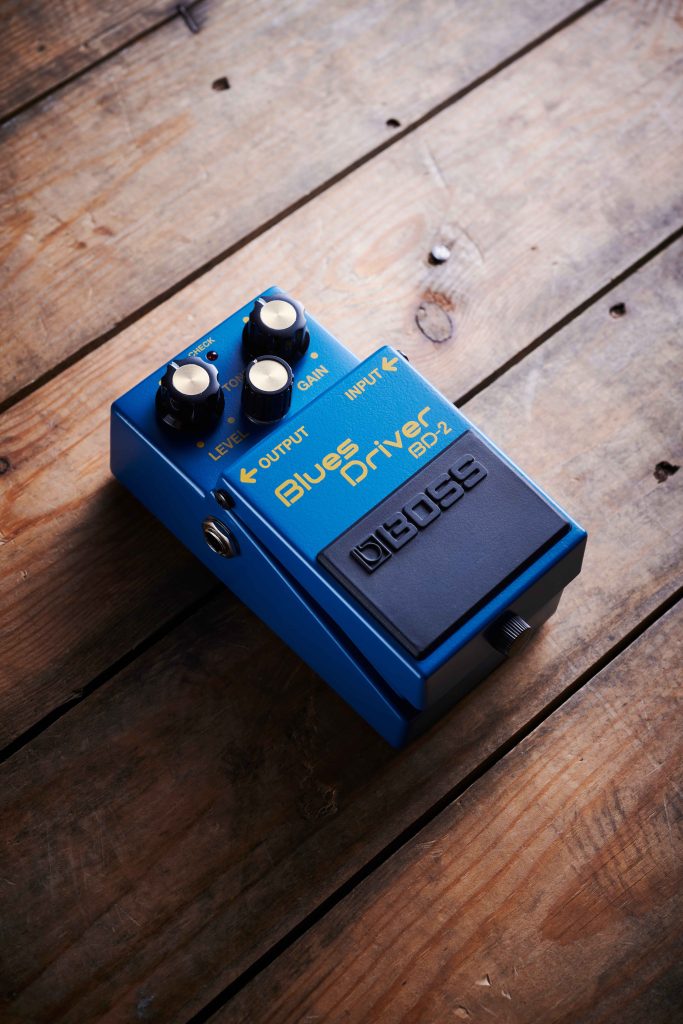
Leanne’s bass parts are often melodic, so I juggle rhythm and lead simultaneously on guitar. With the Blues Driver and Equalizer pedals, I dial in a tone that balances everything out.
"The GE-7 gives my rig some extra oomph when needed and complements the natural sound nicely."
Janelle Borg
The BOSS GE-7 Equalizer has many uses. How do you like to use it in your rig?
JB: The GE-7 gives my rig some extra oomph when needed and complements the natural sound nicely. It also means I can adjust my tone from venue to venue, so our sound stays as consistent as possible. The fewer variables, the better. I want to enjoy playing a show rather than deal with many issues.
The GE-7 is an “always-on” pedal. I have a particular guitar, and I like its OG sound. It’s a Fender Pawn Shop Mustang, made in Japan, with humbuckers (as opposed to the regular Mustang single-coil pickups).
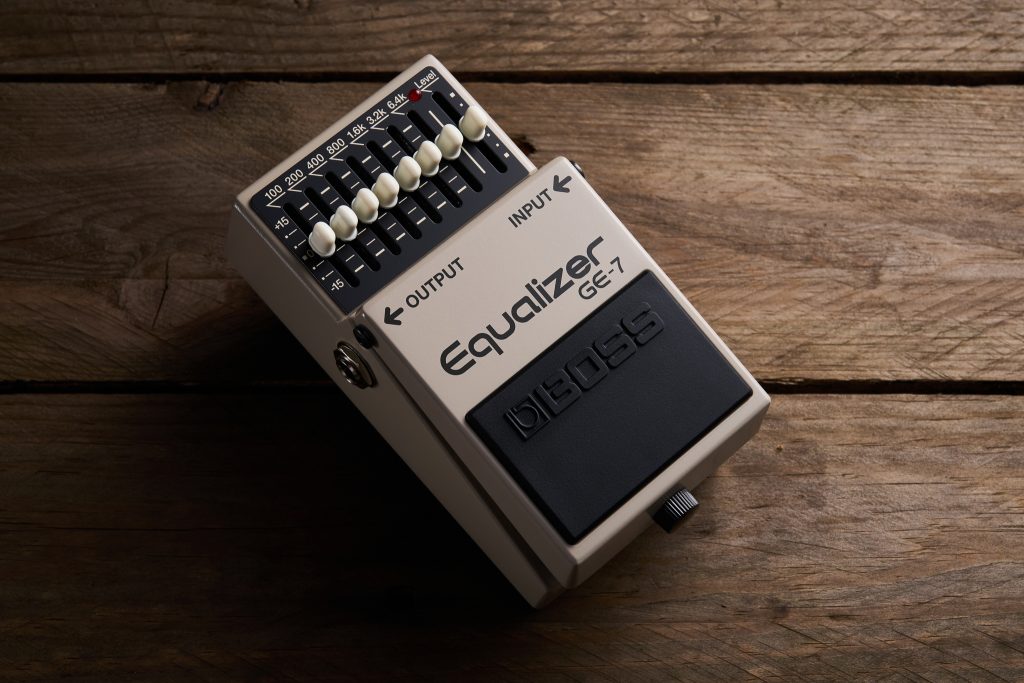
“Reverberations”
Leona, “Reverberations” features gorgeous atmospheric vocals. How do you recreate that live?
LF: “Reverberations” was recorded before I got the VE-22, though I use it to create the same vocal effects live. That’s why I started looking at the VE-22; I realized I could do that live without carrying a laptop. It’s very close to the record. The Harmony Double effect makes the vocals sound a lot bigger.
In the bridge section, I use the Hazy Wrapped effect with a hint of chorus and flanger to give that cranky megaphone/telephone sound. It makes me sound like I’m coming out of an amp, which I was during the recording. I like to record layers, dry and wet.
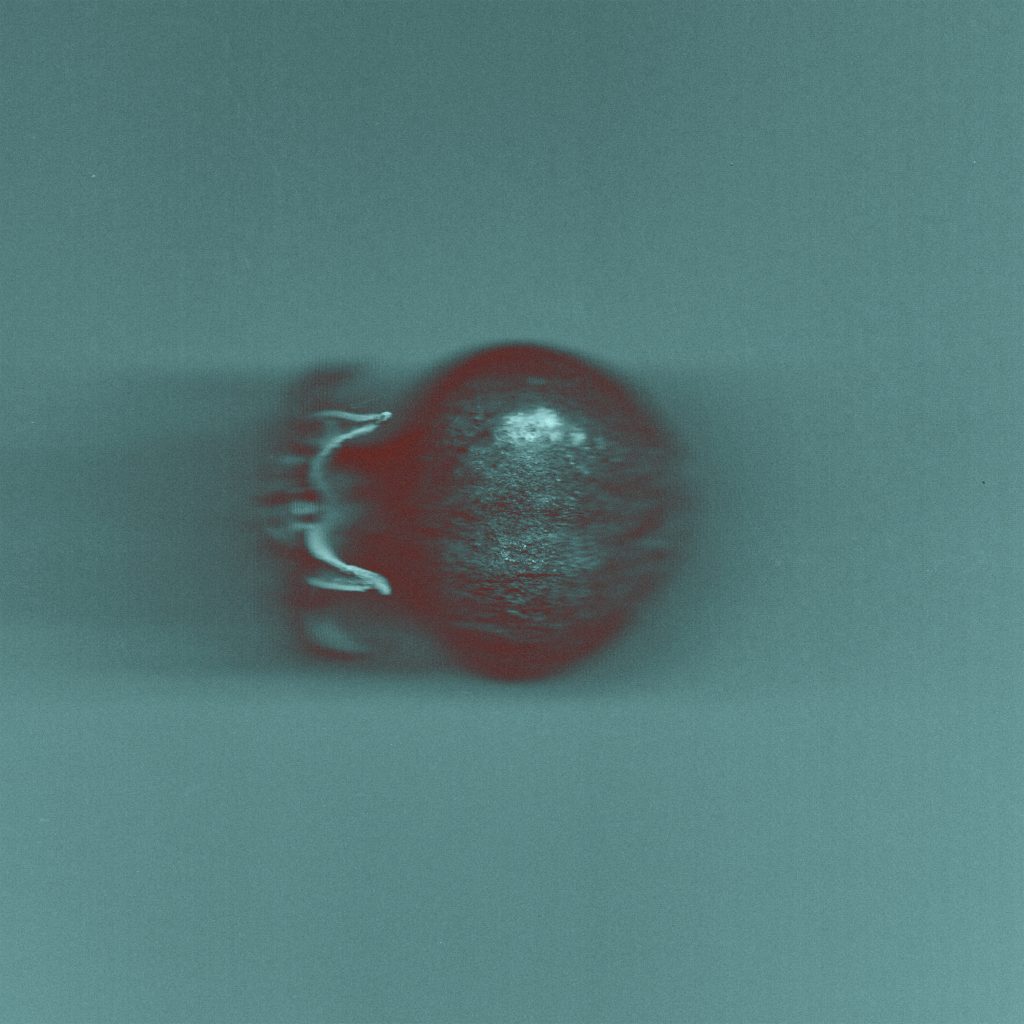
"We really clicked with Johnny... He’s worked with Jehnny Beth and Savages, and Leona and I grew up on that stuff. They’re childhood heroes."
Janelle Borg
What was it like working with Johnny Hostile?
JB: We really clicked with Johnny. He only mixed (he didn’t produce), but it almost felt like he did, because when we received the mix back, it sounded like a different song. He’s worked with Jehnny Beth and Savages, and Leona and I grew up on that stuff. They’re childhood heroes.
LF: It’s always good to speak to a well-rounded person who understands different art mediums. When I sent Johnny the brief for “Reverberations,” I gave him literature and film examples to reference. Like if “Reverberations” could be a movie, it would be a bit of Rohmer and Tarkovsky.
Speaking to someone on that level who can understand what’s happening inside your head and then replicate that feeling is beyond amazing. Technically, you’re not communicating in words; you’re feeling an aura and trying to get a vibe.
He did a great job giving the song texture and making an even more cinematic sound. That was always the aim. As a listener, you get encapsulated, like you’re in a room. It’s 360-degree sound. It sounds as if you can see it, like an old, grainy photograph.
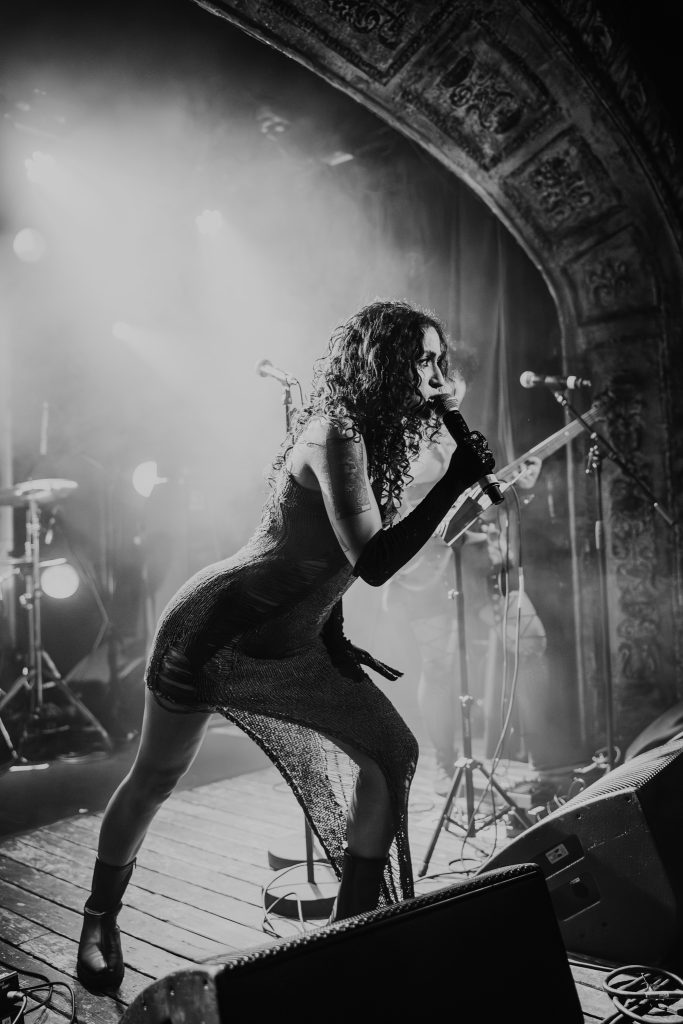
JB: Johnny Hostile’s mix features sounds that are challenging to reproduce live. I try to replicate various textures using live looping, which gives the effect of having more than four people on stage. Playing stuff live is a different ballgame.
"I try to replicate various textures using live looping, which gives the effect of having more than four people on stage."
Janelle Borg
Studio to Stage
Janelle, are the BOSS effects we hear on “Reverberations” the same ones in your live rig?
JB: Yes. I used the same effects I use live on the recording. I also did a noise layer with a guitar bow to give an eerie, disconcerting vibe. I do that live. I’ll use a violin bow and loop several different parts.
I’ve been using a violin bow throughout my whole guitar journey. I started playing the violin at a very young age, so it feels natural for me to use one. It’s nice to create textures, especially with alternate tunings.
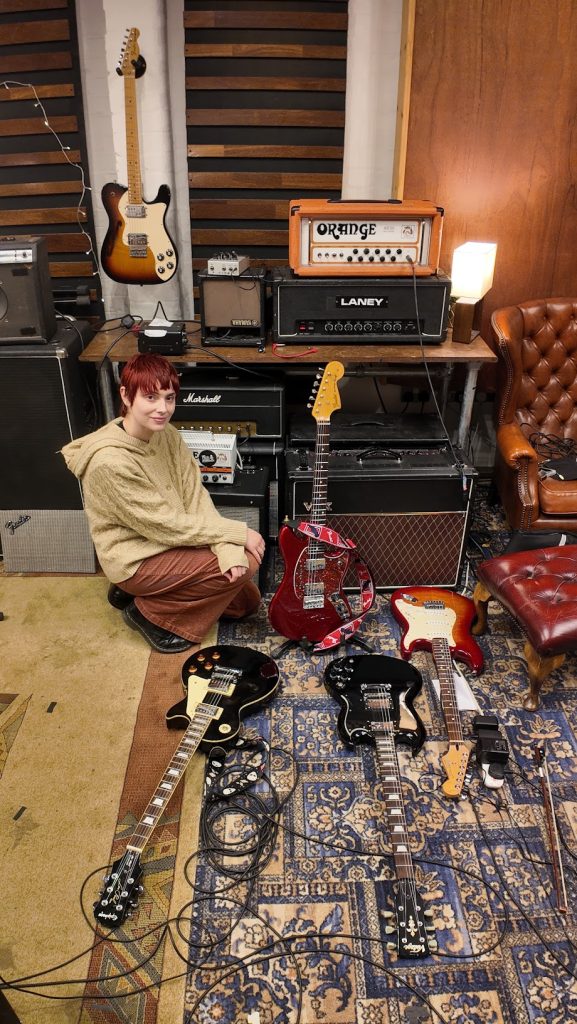
There’s quite a story behind how the band formed. How did you all find each other?
LF: Three of us knew each other from back home in Malta: myself, Janelle, and our bass player, Leanne Zammit. We got our drummer, Sofia Rosa Cooper, coincidentally. The universe somehow wanted us to unite with Sofia.
Two weeks before a tour we had planned in England, the drummer we had back home quit the band. Janelle had this idea to look at Facebook groups and stumbled upon Sofia.
Sofia joined the band on the same day we had the first gig. Honestly, it was the best day of my fucking life. It was like love at first sight, for real. We really gelled. That was the start of a sisterhood. We became inseparable.
Even though we’ve been through the depths of hell together, we’ve not given up on each other. We saw so many different versions of ourselves—shedding different versions of ourselves musically and metaphorically. Ultimately, we moved to Brighton to be with Sofia.
"We made a courageous decision to up and leave. It isn’t easy to do that in your early 20s without a job or a place to live."
Janelle Borg
JB: When we were back in Malta, our equipment got stolen. Brexit was happening, and we were like, “If we want to do something with this, we have to move abroad,” because Malta is a very small country. If you’re doing one show, you’re not going to do another show the day after. The population is about half a million people.
We made a courageous decision to up and leave. It isn’t easy to do that in your early 20s without a job or a place to live. At least we knew Sofia and a couple of other people. But still.
We partly moved to Brighton because Sofia lives there. We wrote a list of possible places. Brighton is close to London, and has the mildest temperature compared to most cities in the UK. Then there’s the sea, of course. So, when we found Sofia, the decision was made.
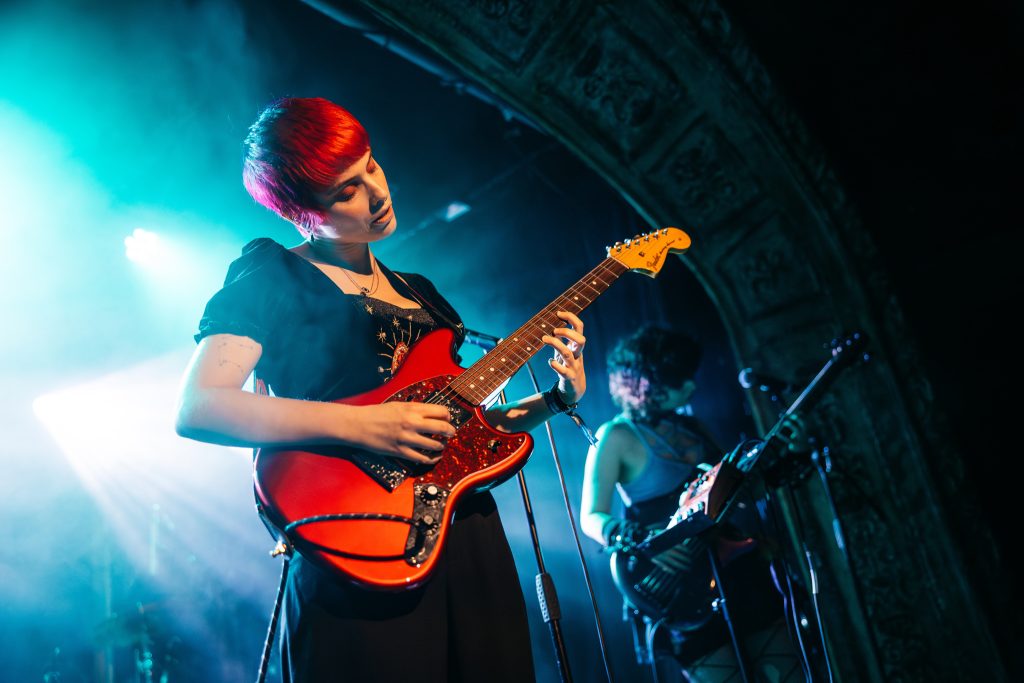
Brighton Rock
Tell us about the Brighton music scene. Would you liken it to any other place?
LF: Brighton feels similar to Bristol. When you meet people from there, they seem to be into the same kind of stuff. I mean, being vocal about politics, being environmentally friendly, into the same kind of bands, and a bit left-leaning.
Brighton is a good size. It isn’t as overwhelming as London, where we’d probably have to live on the outskirts in a shoebox, paying massive amounts of rent. Plus, some of the coolest people are in Brighton: Nick Cave, David Gilmour, and some of our favorite comedians, like Matt King, who plays Super Hans in Peep Show, and Dylan Moran from Black Books.
"Local music promoters do so much for the community... Without them, a band like us wouldn’t have been able to get to where we are now."
Leona Farrugia
JB: I’ll knock on David Gilmour’s door one day, like, “Hey, David! What’s up? Do you have a guitar to spare, please?” Fatboy Slim lives here, too.
LF: Fatboy Slim does so much for the Brighton community. And local music promoters do so much for the community, too. They live and breathe community. Without them, a band like us wouldn’t have been able to get to where we are now.
How does the Brighton music scene support up-and-coming bands?
LF: The way is paved for the up-and-coming bands, and the scene is mainly based in grassroots venues. We’ve got The Hope & Ruin, The Prince Albert, and Green Door Store. Then there are bigger stepping-stone venues like Patterns, Chalk, and Concorde 2. Concorde 2 is on everyone’s wish list to play. We started out in The Hope & Ruin and Green Door Store.
"New bands are always popping up, which is a great sign in my opinion—like it’s never stagnant to the point where there’s no new talent."
Leona Farrugia
Scene and Heard
How have local promoters supported you on your journey?
LF: I remember this promoter called Polly Miles from Acid Box Promotions. Bless her heart, she’s a gem. She believed in us. We weren’t even in the UK at the time; we were just some random ass band from Malta. Like, “Please, can we play at this Halloween show at Sticky Mike’s Frog Bar?” She added us on the bill, and it was one of the best days of our lives. We were like, “This is definitely the place to be.” She continued to help us along our journey after we moved. You will find amazing people like Polly in Brighton—the promoters Melting Vinyl and Form, for example.
Do musicians in Brighton tend to support and uplift one another?
LF: Everyone helps each other, especially when there are festivals on—grassroots festivals. It makes the city so much better. I feel like new bands are always popping up, which is a great sign in my opinion—like it’s never stagnant to the point where there’s no new talent. There’s always a new thing going on.
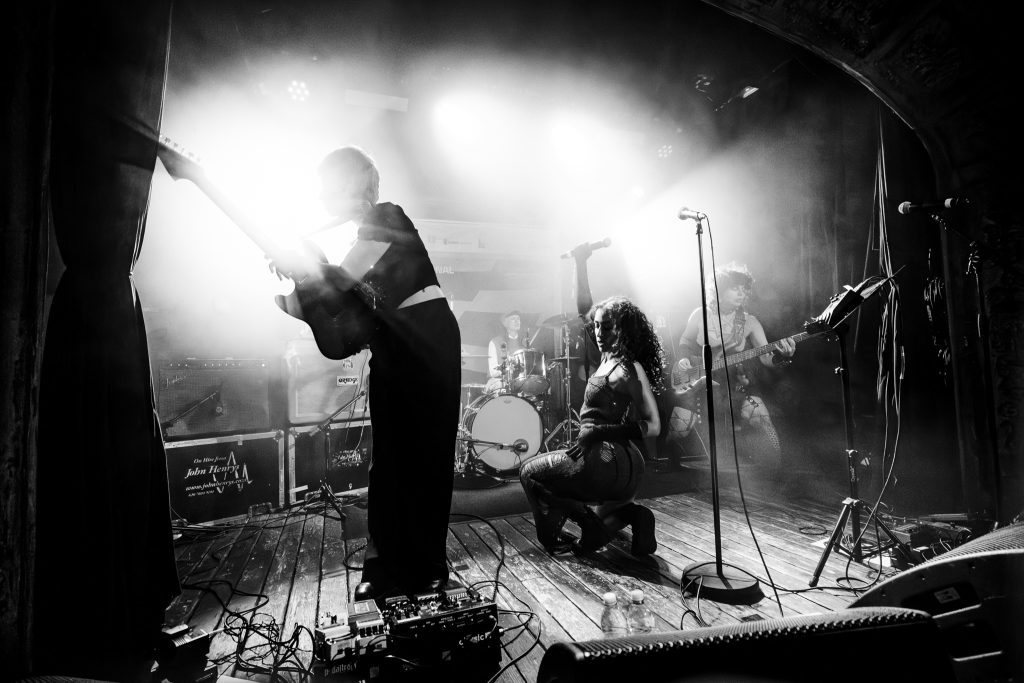
"There’s a saying: keep Brighton weird. It is weird and quirky, and I love it."
Leona Farrugia
Brighton has a reputation for being eclectic and welcoming. How does that diversity show up in its music scene?
LF: In terms of genre, Brighton is just so vast. If you want to listen to Latin American bands, you can. If you’re into jazz, you can find that as well. But I guess Brighton is big on alternative rock and post-punk. There’s a big drum and bass scene as well.
JB: There’s an incredible DJ party scene, including queer parties. And hip hop is big, too.
LF: Sometimes it can be pretty hard to find your tribe in a city. But even if you feel like you’re a bit of a misfit, you feel welcomed in Brighton. Whoever you are, however you dress, whatever you look like, it doesn’t matter, because you’re in Brighton. You could go out on a bike in your birthday suit, honk about, and no one would care. Everyone would applaud you.
There’s a saying: keep Brighton weird. It is weird and quirky, and I love it. You meet a lot of different characters. Even if you go down the caff, you’ll see a quirky character dressed as a pirate. That kind of freedom is inspiring.
"Being on stage and female-presenting is political in itself... We have to be political because our existence on stage and in the industry is inherently political."
Leona Farrugia
Are there any local studios in Brighton that’ve been particularly supportive of you?
LF: In terms of recording facilities, there are Small Pond Studios and Brighton Electric, who’ve helped us a lot, bless them. There are a lot of smaller ones that have popped up over the years. Some of the smaller producers are making a name for themselves over here.
How do Brighton’s music colleges contribute to the city’s vibrant music scene?
LF: There’s BIMM Music Institute and WaterBear music college, too. As a city, Brighton has gained a reputation. Some acts from here have “made it,” like the punk band Lambrini Girls, and you find many musicians come here to study while chasing their dreams.
Musika Politiku
Brighton has a politically aware music scene. How does ĠENN balance such expectations with identity and artistic vision?
JB: Being on stage and female-presenting is political in itself. We still get called an all-female band, for example, which is exclusionary. It’s something we’ve experienced, even individually. When we met Sofia, that was something we bonded over, especially since she comes from a minority background. I think that’s what makes our sisterhood really tight. We have to be political because our existence on stage and in the industry is inherently political.
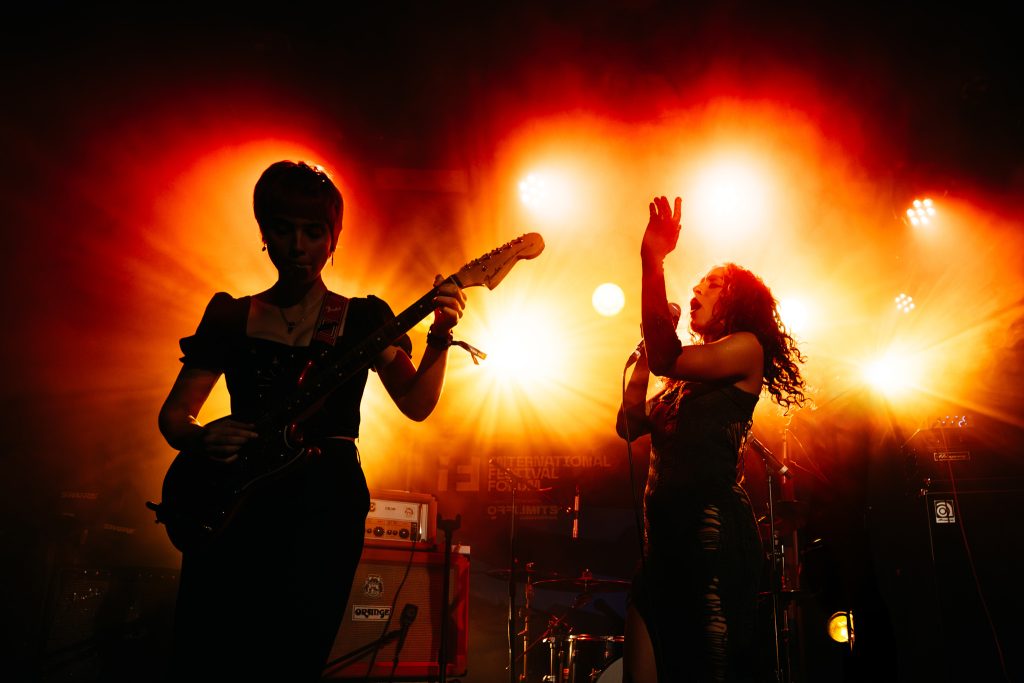
"Of course, your identity is who you are, but it shouldn’t dictate your art."
Leona Farrugia
We get boxed in as riot grrrl. That movement is fantastic, and it’s great that there is a resurgence of artists who are directly political in their music. But we get immediately branded as specifically an all-female punk band.
LF: You get branded as punk, even if you’re into shoegaze or post-rock. Of course, your identity is who you are, but it shouldn’t dictate your art. It restricts you when you start calling yourself all-female, punk, math-rock, or whatever. Humans are so multifaceted, and people change. I was more feral and angry five years ago, but now I’m in a different place. So, the art that I’m creating is going to reflect that.
People find comfort in putting each other in boxes because of relatability. As humans, we have a need to relate to everything. I don’t know where that comes from. Maybe a place of insecurity. Maybe a place of comfort and familiarity. I’m not quite sure. I’ve always related to art that feels uncomfortable and is not fed to me directly. It helps me grow.
Follow ĠENN: @genntheband
